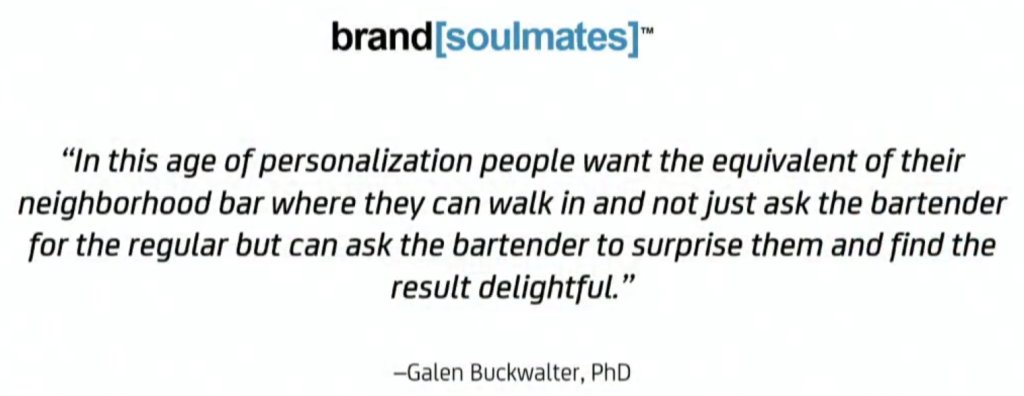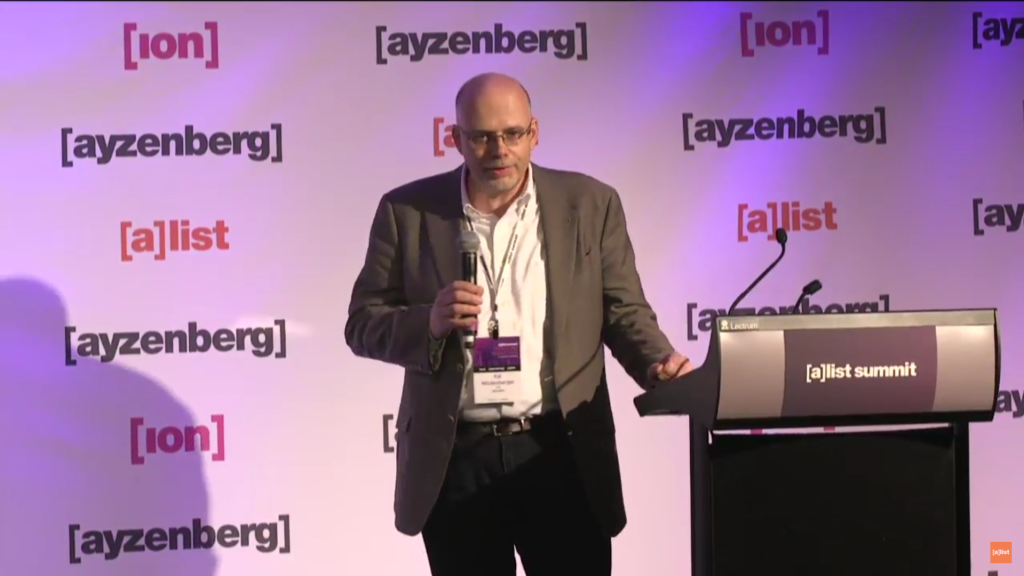Dr. Galen Buckwalter is the data scientist who helped develop services such as eHarmony and Payoff.com, and is the scientific advisor to [a]insights. As it turns out, predictive analytics, similar to the ones that help singles find their perfect match, can help brands find their soulmates. Unfortunately, Dr. Buckwalter was unable to attend the [a]list summit this year, but his co-host was able to [a]insights CTO Kai Mildenberger, was able to step-in and explain how sifting through a mountain of data to find a brand soulmate is a lot like finding love.
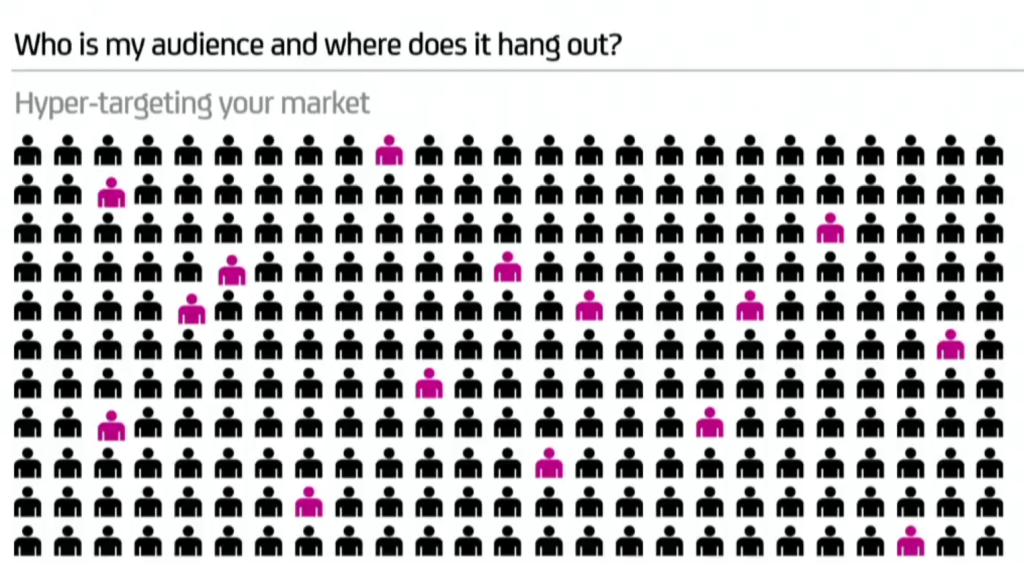
Mildenberger begins his presentation by expressing how targeting is hard. “The potential audience size is amazing, and finding an audience and what works for your brand—out there in this vast sea—is hard, especially when you’re looking for an exact match, or hyper-target.”
Gone are the days when you could look up a Nielsen demographic profile to find the suburban mother with a college education, has two kids and owns a home. It’s not so easy in the world of mass globalized markets, especially when you add in millennials and the digital natives that are following them, who are not so easily profiled.
But Mildenberger also notes that there is a big bright side: we live in a world of sharing. “People are sharing at an incredible clip,” he states, and it is being done directly, freely and publically on a large scale with peers, family and friends. “They’re creating original and authentic content at a massive clip, but where is all of that data going? They’re going into social networks.” As a result, social networks are creating a massive ocean of data.
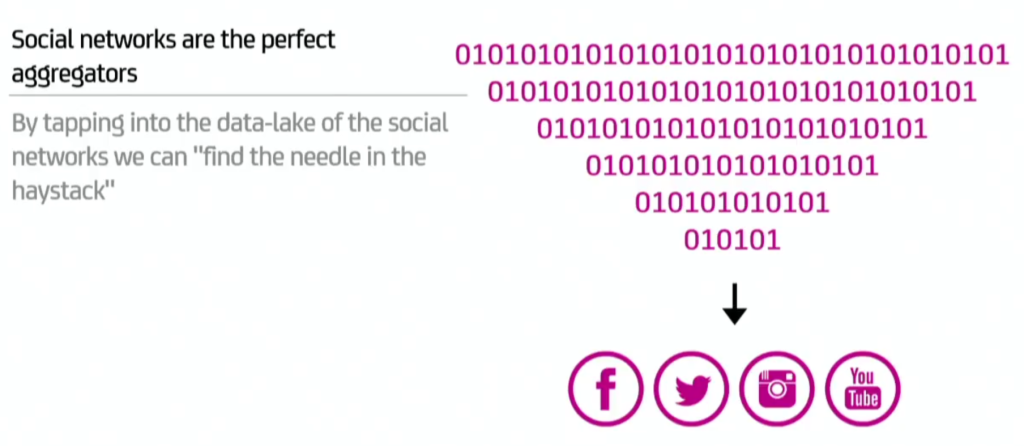
But now the problem is going sorting through that ocean, which would take a team decades. Mildenberger then presented the history of computers of artificial intelligence, which went from predicting where nuclear strikes would fall to driving cars. However, AI hasn’t had an easy road. In 2004, no autonomous car could complete the Darpa Challenge. Then Mildenberger showcased videos from last year of humanoid robots that all had major mobility issues. Processing technology had reached a point of stagnation, and was no longer compliant with Moore’s Law.
But something magical happened that nobody expected. “The best things come from serendipity and left field,” Mildenberger explained. Powerful graphics cards, like Nvidia’s Titan Z, saved Silicon Valley by ushering in a new era. It was these high-end graphics cards that broke through the ceiling by enabling a massive amount of data processing.
Mildenberger exclaimed, “We thank all of you gamers for pushing the hardware. Without gamers, this would not have happened.”
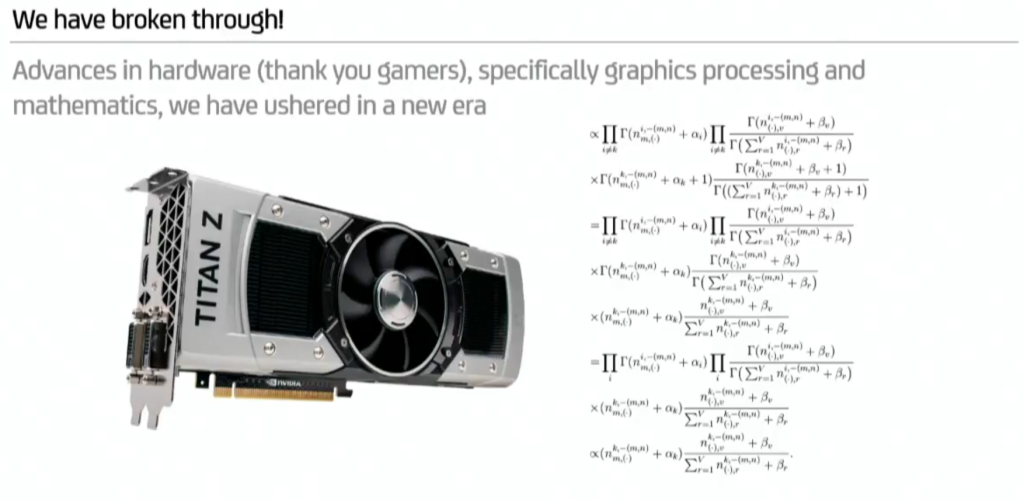
Algorithms, like the one shown on the right side, of Mildenberger illustration, can now be run against massive amounts of data, which is only possible because of the powerful graphics processor. Progress is now happening so fast, that we don’t even have a name for the era. Cars can now effectively drive themselves on highways and humanoid robots can walk across a variety of uneven surfaces while performing tasks.
That technology makes predictive analytics, at the scale brands want, possible. “Now we can go through that massive data, aggregated through social networks, to find an audience,” said Mildenberger, and the technology can even go one better. “We can find a voice, creator or influencer inside of that audience that is a perfect match for the goals, ideals and feel of your brand.”
The key is in psychometrics, and there are currently two schools of thought on the influencer tech side. “Most of the market is going the Tinder route,” Mildenberger explains, “which is transaction and dual-side market based.” It’s really quick with no curation. The other side (which Dr. Buckwalter is on) spends the extra time, effort and brain power to go the eHarmony route, because they think “your brand is way too valuable for a bad one-night stand.”
Using the data to find out who these people are and how they work is really important. The presentation concluded with a quote from Dr. Buckwalter, which sums up the long-term goal of the eHarmony approach.
“In this age of personalization, people want the equivalent of their neighborhood bar—where they can walk in and not just ask the bartender for the regular, but can ask the bartender to surprise them and find the result delightful.”
